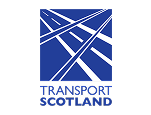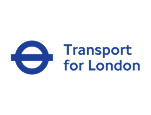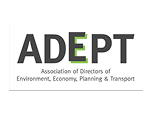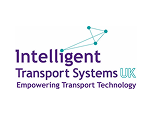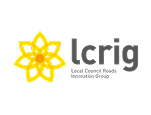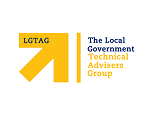A new National Highways report says its work in the next roads period is likely to focus on making the most of its existing network with an 'increased focus on smaller £2-25m schemes'.
Despite this, the third (2025-2030) Road Investment Strategy (RIS) could well be dominated by existing mega schemes carried forward from the current RIS.
Announcing its RIS 3 initial report to government, National Highways re-committed to such mega projects as the £2bn A303 Stonehenge scheme, the £9bn Lower Thames Crossing and the A66 Northern Trans-Pennine dualling scheme.
The report notes: 'A large part of our improvement portfolio for the third road period is likely to consist of schemes which we have already committed to deliver.'
National Highways is awaiting a new decision on a development consent order (DCO) for the A303 Stonehenge scheme and awaiting a decision on the existing DCO on the Lower Thames Crossing and the A66 schemes.
National Highways said the Strategic Road Network Initial Report for 2025-2030 sets out its advice to the Government on priorities and outlines the challenges facing its increasingly busy network and how investment can help tackle congestion and smooth traffic flow.
The document makes limited commitments to improving safety. An initial programme of improvements to A-roads will be welcomed by road safety campaigners but elsewhere on smart motorways, critics argued existing commitments were being watered down.
The document rows back on ministers' previous pledge to retrofit emergency areas (EAs) on existing all lane running schemes to achieve a spacing of three-quarters of a mile where possible.

National Highways has committed to installing 150 new EAs by the end of RIS 2 and transport minister Baroness Vere told MPs last year that meeting the spacing standard would require a further 200 in RIS 3.
However, the initial report document casts doubt on whether the programme will continue beyond 2025.
It states: ‘We will continue working with DfT to consider the case for retrofitting to the remainder of all lane running smart motorways. This will be part of the development of RIS3, based on the evidence of safety benefits we are gathering and assessing.'
Jack Cousens, head of roads policy for the AA, told Highways: 'Increasing the number and frequency of emergency areas is the minimum requirement to improve both safety and confidence across the ‘smart' motorway network.
'Rather than rowing back on previous commitments, these crucial safety standards need to be urgently retrofitted to give us the safest possible roads.'
The report also promises a targeted reduction in fatalities and serious injuries through interventions such as upgrades to single-carriageway A roads, initially focusing on 17 routes covering 147 miles.
This compares with 27 local authority road schemes that will share £47.5m central government funding under the latest round of the Safer Roads Fund.
The report also contains a general pledge to use the iRAP star rating methodology to improve the inherent safety of roads, without making specific commitments.
During the first RIS, National Highways had a target to improve the majority of one and two-star routes to three stars and above, but the target was later dropped as it was considered too challenging.
The new report notes that a 2020 survey identified that 19% of the SRN by length was rated as one star or two stars, and pledges to raise the rating of such roads to three stars or above ‘where possible'.
Other proposals in the report, which are subject to future decisions on funding from government, include:
- increasing investment in small local schemes – those valued £2m to £25m – to tackle known safety and congestion issues, often via improved slip roads and junctions connecting to local roads;
- providing road users with more real-time and personalised information covering congestion, ongoing incidents, planned roadworks, events and the availability of electric vehicle charging points, giving them alternative routes if necessary;
- a greater focus on improving journey experiences, including considering lorry parking facilities as part of the design and planning of projects where a need is identified;
- enabling the transition to zero carbon motoring by supporting the installation of around 2,500 open-access rapid charge points for electric vehicles on the network by 2030;
- continuing to provide infrastructure for non-motorised users such as walkers, cyclists and horse riders, including possibly acquiring more land to create physically segregated ‘link' paths and cycle lanes alongside and away from the highway;
- increasing proactive maintenance, with the aim of reducing large repairs and disruption on the network, while also driving efficiency and roadworker safety through the increased use of autonomous plant on work sites.
National Highways chief executive Nick Harris said: 'While we strive to maintain safe and reliable journeys for the vehicles that rely on our network each day, we know that ever higher levels of social and environmental responsibility will, quite rightly, be required of us.
‘This means we will need to find new and innovative ways to continue connecting the country by facilitating active travel and public transport, and also using digital technology to help customers make more informed decisions and managing our network more efficiently.'
Roads minister Richard Holden said: ‘Our roads are vital to our economy, and the plans set out today will help to enhance connectivity and boost growth, while protecting the environment.'
The Initial Report will be subject to an eight-week consultation by the Department for Transport and is published alongside National Highways' long-term strategic plan, Connecting the Country, which sets out the company's priorities for the network up to 2050.
Separately, National Highways has published 20 Route Strategies, which it said ‘help develop and maintain a detailed evidence base on the performance of the network – identifying current issues and understanding potential future challenges'.









